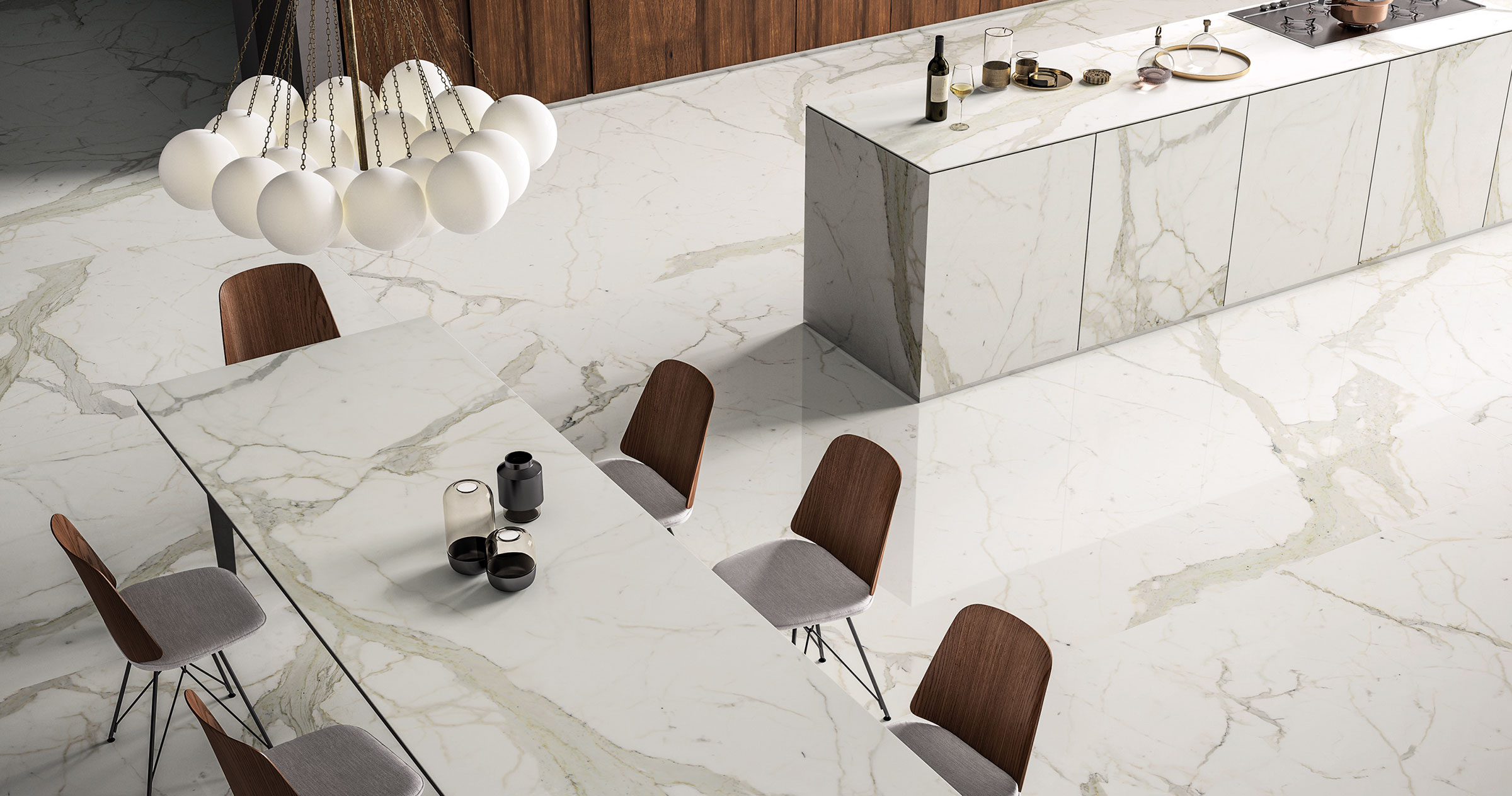When it comes to countertops, there’s nothing like stone. Or is there? There’s a good chance the marble-like slab you’re considering for your kitchen right now might just be porcelain.
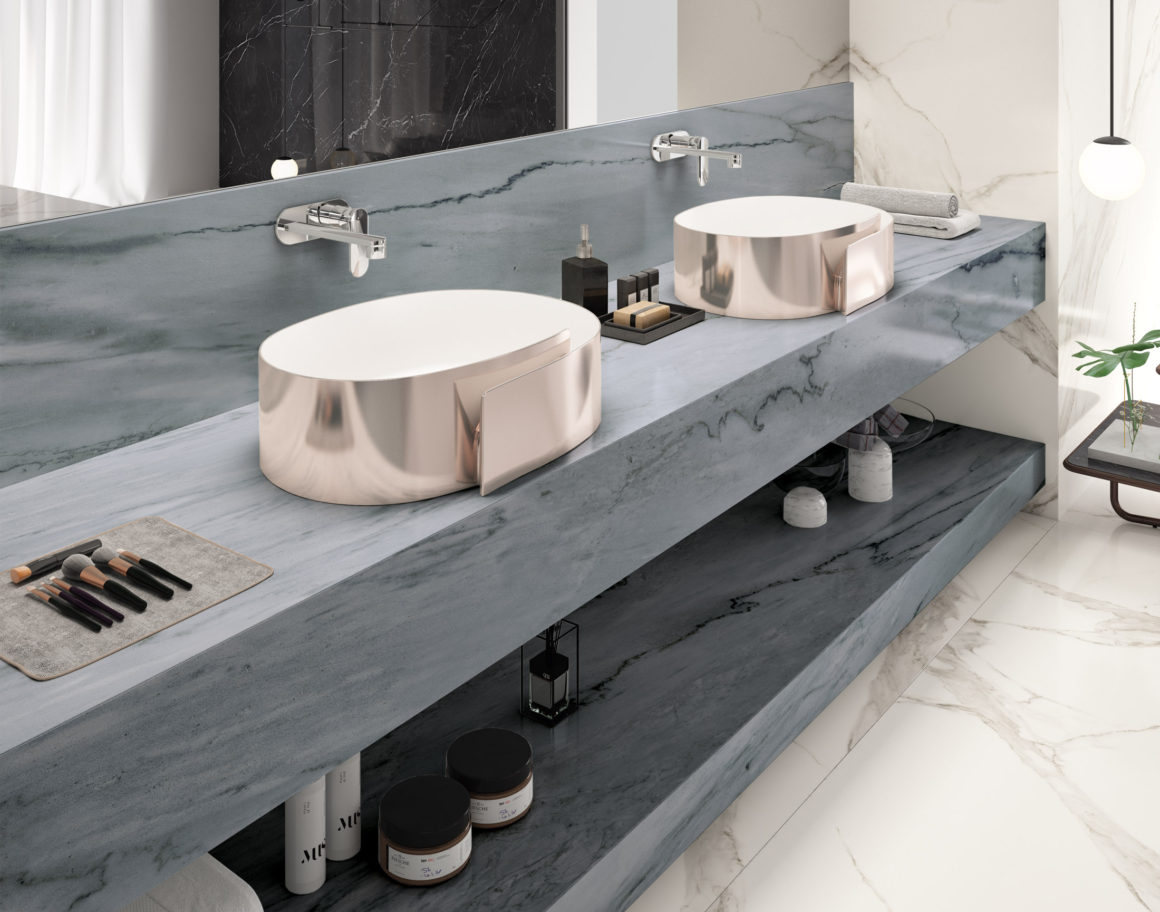
Already known as a durable material for floor and wall tiles, porcelain is being manufactured now in much larger, thicker slab sizes, making it a popular choice for everything from walls in bathrooms and showers to kitchen backsplashes and countertops.
“Porcelain is great because it doesn’t absorb water, it’s scratch-resistant and it’s heat resistant because it’s fired at 1,200 degrees C, says Kristina Panzera, vice-president marketing for Ciot Inc., a company that has seen its sales of porcelain slabs explode since they were introduced a few years ago. “All these characteristics make it great for countertops, floors, walls, exterior walls. The biggest trend we’ve seen this year is in fireplaces.”
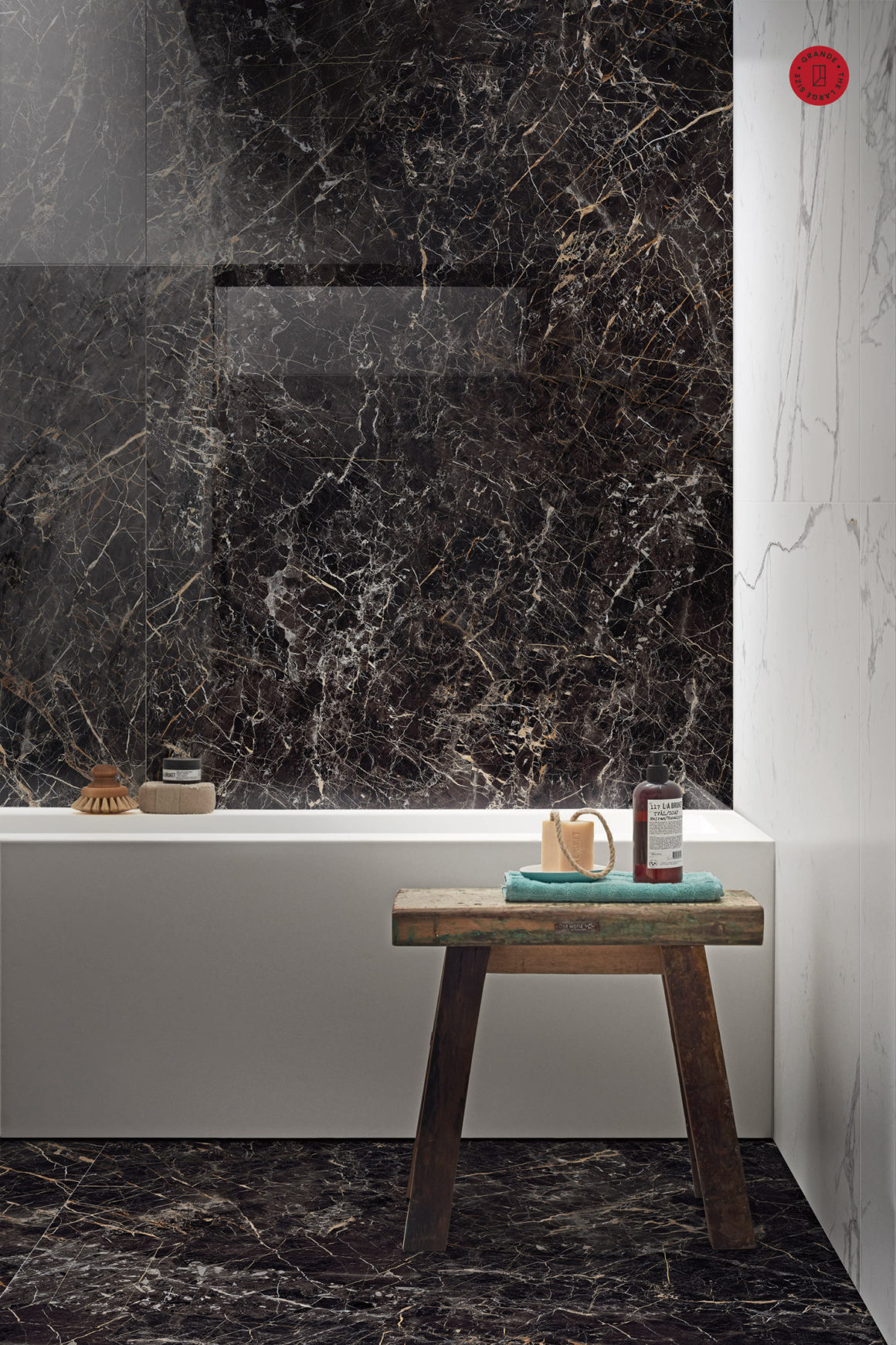
Known for its durability in small tile sizes, fired porcelain is stronger than fired ceramic. Its chemical makeup is different, it has a lower water content, and it’s fired at higher temperatures. Once cooled, the molecules in porcelain are fused more closely, giving it its strength. With technological advances, including larger, heavier presses, that same durability is now available in larger sizes. When the slabs first came on the market, they were available only in six-millimetre thickness, but now they are being manufactured in thicker 12-millimetre slabs, too, making it easier to use for counter tops.
Technology has also expanded the range of available patterns and styles, from metallic finishes to the more traditional look of expensive marbles, such as Calacatta. Three dimensional printing techniques give it great depth, Panzera says, and will continue to expand the range of patterns available. The price can be lower than similar marbles, she adds, with polished finishes more expensive than natural finishes.
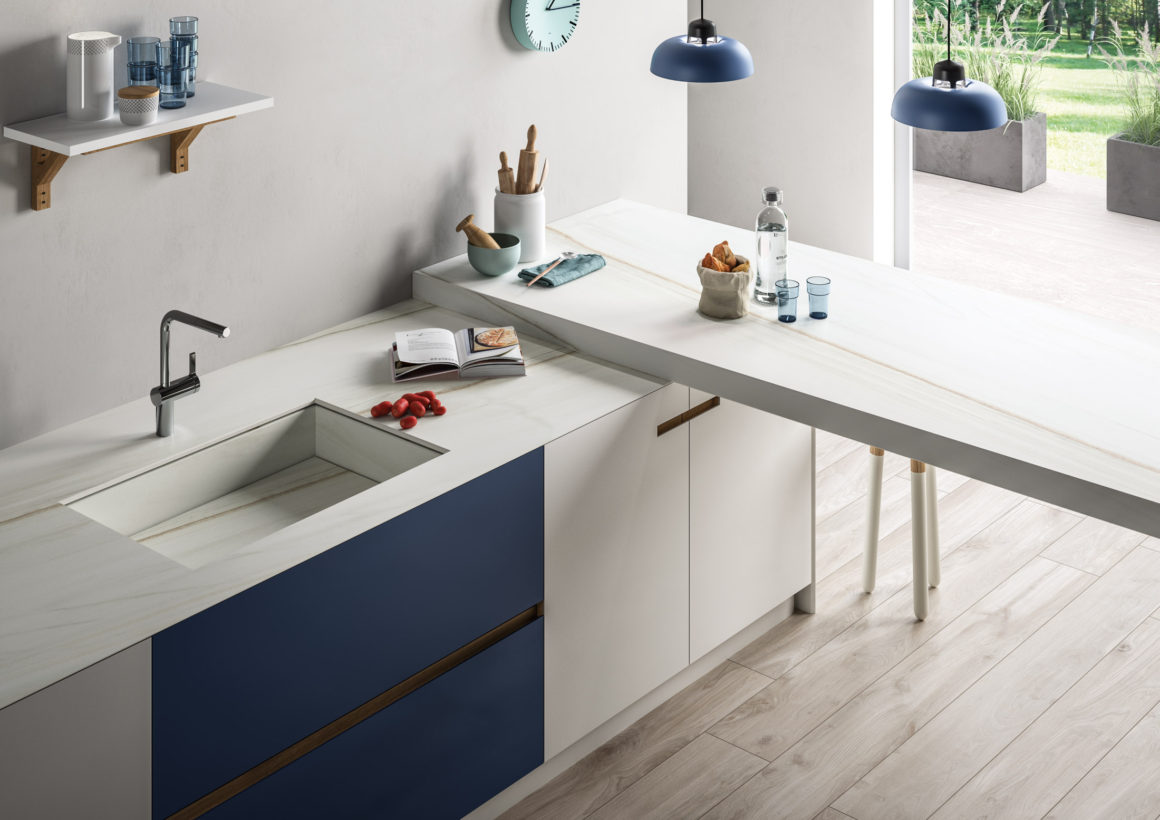
Panzera says porcelain is a popular choice for use in showers, “You can have one full piece with no joints. It’s a very clean, modern look,” she says, adding that it is also being used now in furniture, for tabletops, and even door inserts. “It’s much lighter than stone or granite,” she says, making it easier to handle and install.
The best slabs, Panzera says, are those from Italy. There are other plants in various countries that produce cheaper slabs, but, she says, “the quality is not as reliable. If it’s not fired to 1,200 degrees C, it’s much more brittle and liable to break.”
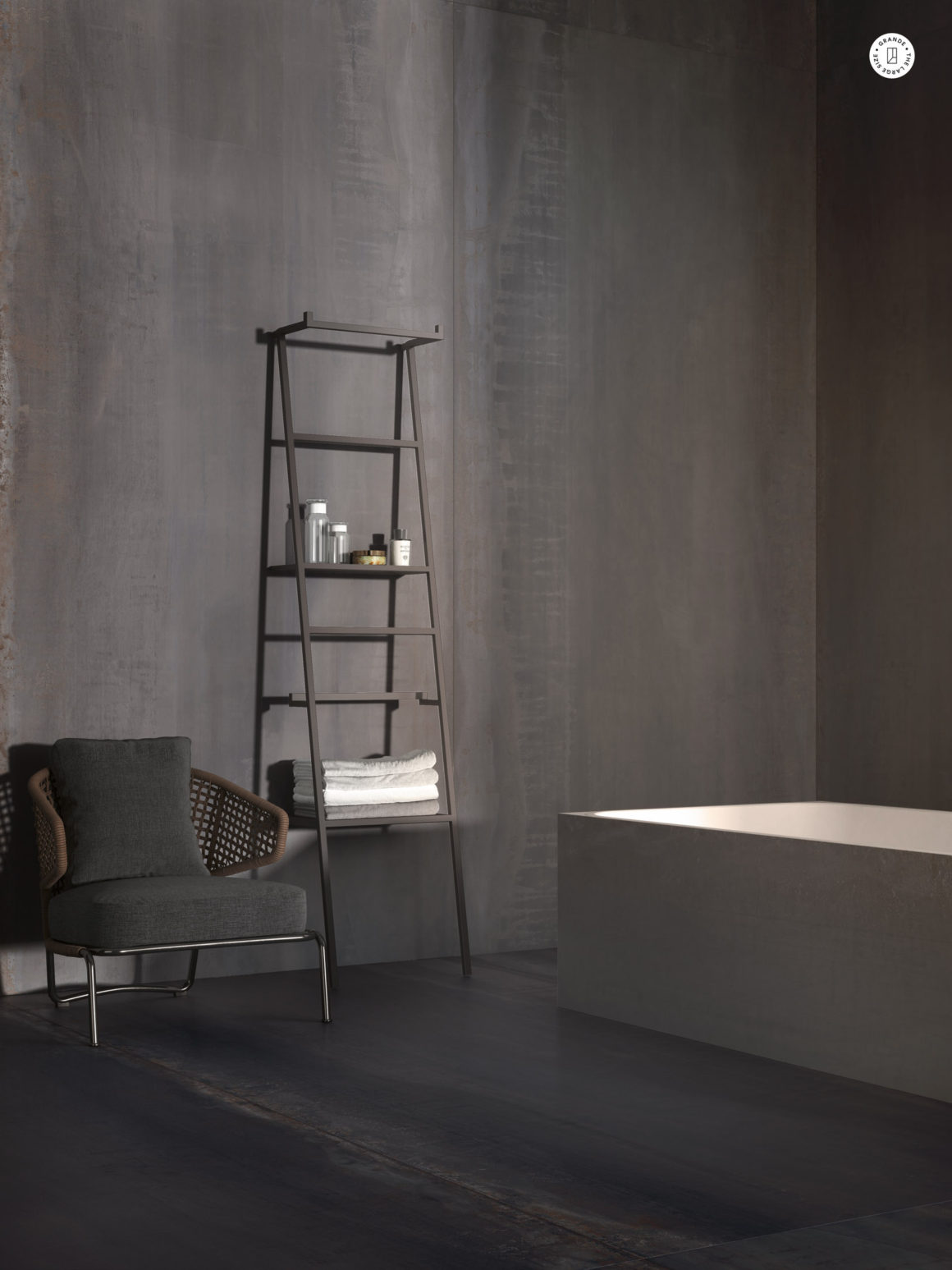
Panzera says she expects the surge in sales that she’s seen in the past few years to continue. “There are more and more colours coming on the market,” she says.
That’s good news for homeowners who love the look of natural stone but want fuss free and strong surfaces. •
Ciot
www.ciot.com

